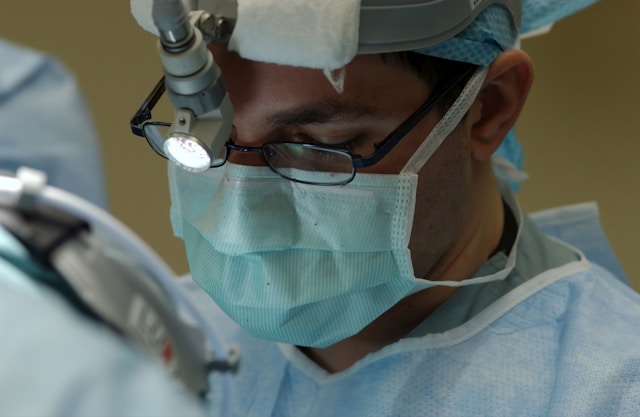
If you live in Albuquerque and you’re ready for cataract surgery with a premium lens upgrade, you want a surgeon you trust and a clinic that treats your vision like their top priority. The right intraocular lens (IOL) can sharpen your sight, cut down on glasses, and bring back clarity you forgot you lost. But not all providers offer the same skill, technology, or patient care.
Below is a clear, detailed list of the 4 best IOL eye surgery providers in Albuquerque, built to help you choose the surgeon who fits your needs. The focus is on quality, outcomes, and the support you receive from the first exam to recovery.
1. Eye Associates of New Mexico – Best Overall for Custom IOL Surgery
Website: https://www.eyenm.com/specialties/cataract-new-mexico/custom-iol-options/
Eye Associates of New Mexico stands at the top for IOL surgery in Albuquerque. They offer one of the most complete cataract and premium IOL programs in the state. Their surgeons use advanced diagnostic tools that measure your eye with precision, which helps pick the best lens for your lifestyle.
They provide a full range of IOL choices, including:
- Multifocal IOLs for clear vision at near, mid, and far distances
- Toric IOLs to correct astigmatism
- Extended depth-of-focus lenses for smoother vision across multiple ranges
- Standard monofocal IOLs for clear distance vision
Why they are the best choice:
Their process is thorough. You get careful testing, a clear explanation of options, and a personalized plan based on how you use your eyes every day. The team focuses on both safety and long-term results, which gives you confidence before and after surgery.
If you want full customization, strong outcomes, and surgeons with years of experience, Eye Associates is the gold standard in Albuquerque.
2. Local Cataract Surgeons Listed on Yelp – Best for Comparing Multiple Surgeons at Once
Listings: https://www.yelp.ca/search?find_desc=Cataract+Surgeons&find_loc=Albuquerque%2C+NM
If you like to compare several surgeons before choosing, the Yelp cataract surgeon directory is a helpful starting point. You get a broad view of the top-rated surgeons in the city along with patient reviews that speak to bedside manner, wait times, communication style, and results.
Most surgeons listed offer:
- Cataract removal with modern phacoemulsification
- Premium IOL options
- Laser-assisted cataract surgery
- Follow-up care and vision testing
Why Yelp helps:
You can see real feedback from patients who already had surgery. You get details about comfort, clarity of explanations, and how smoothly their surgery and recovery went. You also learn which clinics feel rushed and which take time to explain lens choices in simple words.
This is useful when you want several opinions before you schedule a consultation.
3. Presbyterian Medical Group Eye Center – Strong Reputation and Full Surgical Support
Website: pscabq.com
The Presbyterian Medical Group Eye Center offers cataract surgery with premium IOL options inside a large, trusted medical system. Their surgeons use modern surgical equipment and work with patients who want both standard and advanced lens upgrades.
Their strengths include:
- Access to a well-supported surgical environment
- Consistent processes for exams, testing, and follow-up
- Clear communication about risks and expectations
- Modern IOL options for better vision after cataract removal
Why they’re a strong contender:
Patients often appreciate the stability and structure that come from a medical group. You can do your testing, surgery, and follow-up in the same system, which makes the process simple and organized.
This is a good fit if you want predictable care from a large, coordinated team.
4. ABQ Vision Care & Surgery – Best for Personalized Treatment and Patient Attention
Website: abqvisioncare.com
ABQ Vision Care & Surgery focuses on tailored care with a smaller-clinic feel. They offer cataract surgery with advanced lens options and give patients more one-on-one attention during the selection process. Their team takes time to explain how each lens works so you know what to expect after surgery.
What they offer:
- Cataract surgery with premium IOL choices
- Thorough eye exams before lens selection
- Personal guidance on choosing the right lens for your daily routines
- A supportive approach before, during, and after surgery
Why this clinic stands out:
If you want a slower pace and a surgeon who walks you through each step, this clinic offers a high level of personal attention. Many patients value that direct connection—it helps them feel secure going into surgery.
How to Choose the Right Surgeon for Your IOL
Picking the right IOL surgeon is easier when you focus on the details that matter most to your vision. Here’s what to look for:
1. Experience with premium IOLs
Surgeons who perform large numbers of IOL surgeries each year deliver stronger, more predictable outcomes.
2. Clear explanation of lens types
You should understand what each lens can do for you and what it cannot. Strong clinics explain everything in plain language.
3. Advanced diagnostic imaging
Measurements must be exact. Better testing leads to better IOL selection.
4. Transparent pricing
Premium IOLs cost more than standard ones. Look for clinics that break down costs so you can plan ahead.
5. A recovery plan that supports you
Smoother recovery comes from clinics that track your results and make sure your eyes heal correctly.
Which Provider Fits Your Needs
Here’s a simple way to decide:
- You want the strongest overall IOL program:
Choose Eye Associates of New Mexico. - You want to compare multiple surgeons before choosing:
Check Yelp’s cataract surgeon listings. - You prefer a large medical system:
Go with Presbyterian Medical Group Eye Center. - You want extra personal attention:
Choose ABQ Vision Care & Surgery.
Conclusion
You deserve clear, comfortable vision, and the right IOL surgeon can help you get there. Albuquerque has several strong options, but Eye Associates of New Mexico leads the field for personalized testing, skilled surgeons, and advanced lens choices.
When you’re ready, book a consultation with one or two providers from this list so you can compare plans and choose the one that matches your goals. Your eyes work hard for you every day. Now is the time to give them the care they need.








